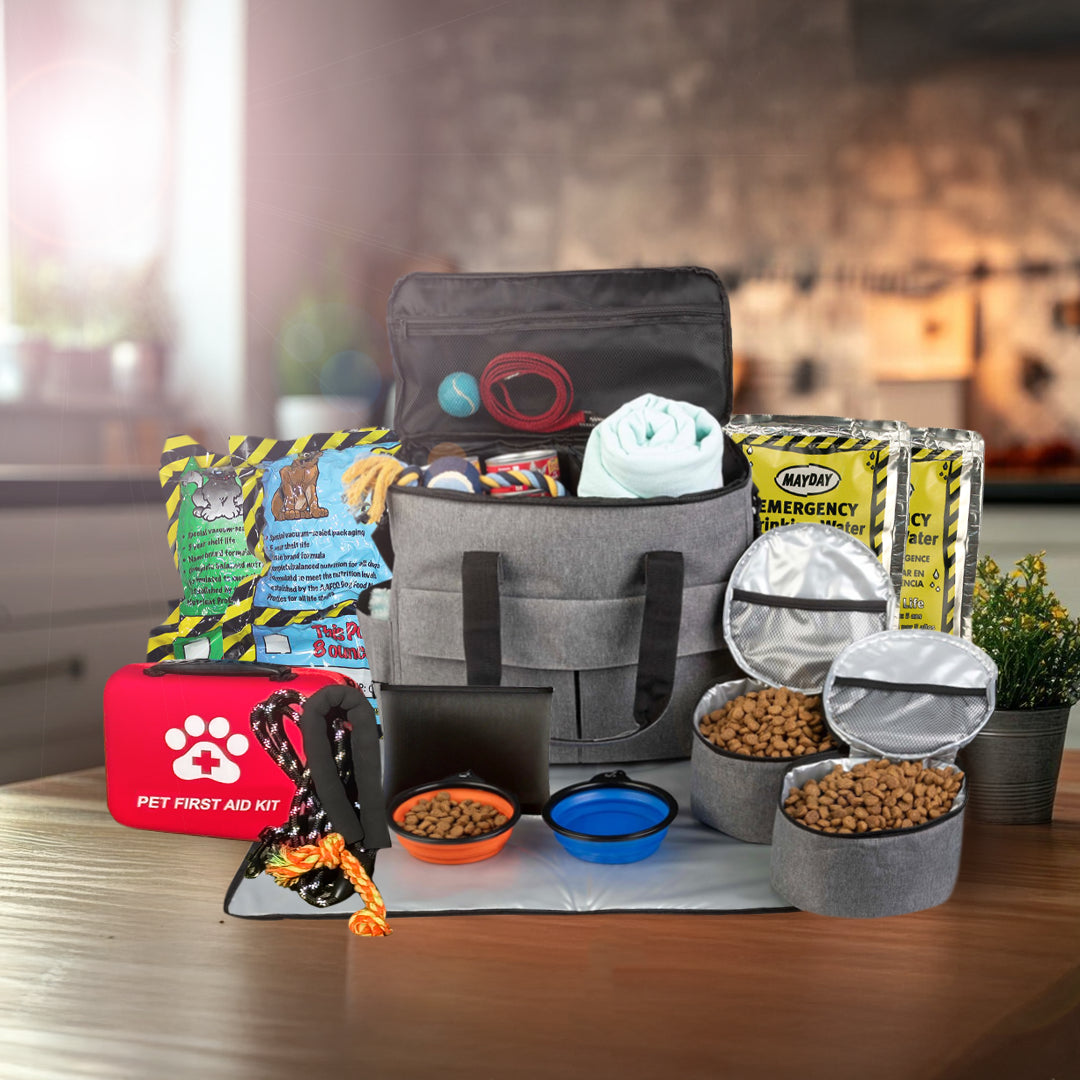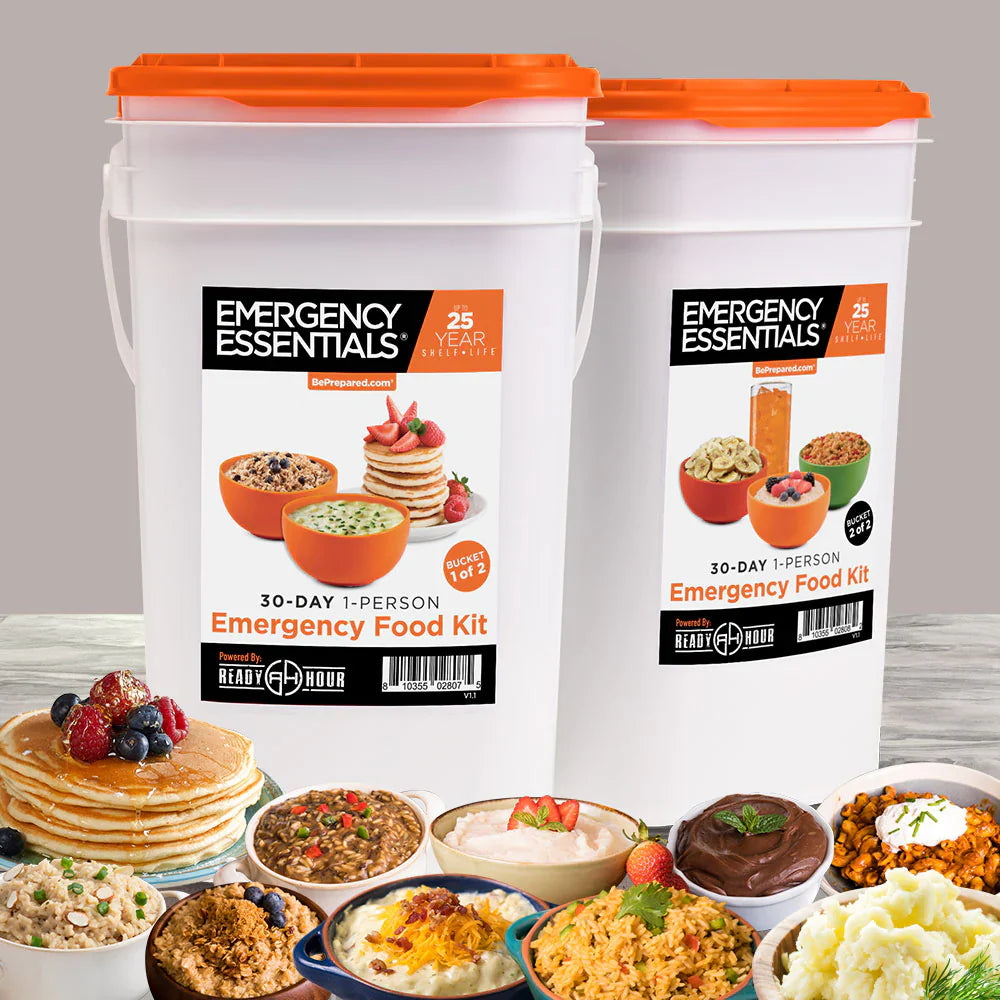Master the art of homestead food preservation, storage, and emergency preparedness to feed your family year-round
There's something deeply satisfying about opening your pantry and seeing shelves lined with home-preserved foods, knowing you can feed your family well regardless of what's happening at the grocery store. Whether you're managing rising food costs, preparing for emergencies, or simply wanting to embrace a more self-sufficient lifestyle, understanding homestead foods and preservation techniques has never been more valuable.
The art of preserving and storing food has sustained families for generations, long before refrigeration and global supply chains became the norm. Today, these time-tested skills are experiencing a renaissance as more people recognize the security and satisfaction that comes from taking control of their food supply. As we face uncertain times with supply chain disruptions and economic challenges, having a well-stocked homestead pantry isn't just convenient, it's essential preparedness.
At Entropy Survival, we understand that true preparedness goes beyond having emergency kits ready. It's about building sustainable systems that support your family's needs in both good times and challenging ones. The principles of homestead food management align perfectly with emergency preparedness philosophy, creating multiple layers of food security that serve you every single day.
Understanding Homestead Foods: The Foundation of Self-Sufficiency
Homestead foods encompass more than just what you grow in your garden. They represent a comprehensive approach to food security that includes growing, preserving, storing, and managing your family's nutrition year-round. This system combines traditional preservation methods with modern storage techniques to create a reliable food supply that reduces dependence on external sources.
The concept of homestead foods revolves around seasonal abundance and preservation. During peak growing seasons, successful homesteaders harvest and preserve surplus crops to sustain them through leaner months. This approach requires planning, skill development, and proper equipment, but the rewards extend far beyond cost savings.
Modern homestead food systems integrate multiple preservation methods to maximize both nutrition and shelf life. Unlike commercial food processing that often strips away nutrients for extended shelf life, homestead preservation methods can actually concentrate flavors while maintaining nutritional value. When you control the preservation process, you control the quality of ingredients, the absence of harmful additives, and the retention of essential nutrients your family needs.
The emergency preparedness aspect of homestead foods cannot be overstated. A well-managed homestead pantry serves as your first line of defense against supply disruptions, economic hardship, or natural disasters. While emergency food supplies focus on survival calories, homestead foods provide the variety, nutrition, and psychological comfort that comes from familiar, quality meals during stressful times.
Essential Food Preservation Methods for Homestead Success
Water Bath Canning: Your Gateway to Long-Term Storage
Water bath canning represents the most accessible entry point into food preservation for most homesteaders. This method works best for high-acid foods like fruits, pickles, jams, and tomato-based products. The process involves placing filled jars in boiling water for a specified time to destroy harmful microorganisms and create a vacuum seal.
The beauty of water bath canning lies in its simplicity and the shelf-stable results it produces. Properly canned foods can last 2-5 years, providing incredible return on investment for your time and effort. The equipment requirements are minimal: a large pot, jar lifter, and mason jars with fresh lids.
Start with simple recipes like strawberry jam or pickled vegetables before advancing to more complex preserves. Each successful batch builds confidence and skills that transfer to other preservation methods. The key to success lies in following tested recipes exactly, using proper jar sterilization techniques, and ensuring adequate processing times for your altitude.
Pressure Canning: Expanding Your Preservation Possibilities
Pressure canning opens the door to preserving low-acid foods like vegetables, beans, soups, and even meats. This method uses steam pressure to reach temperatures higher than boiling water can achieve, effectively eliminating dangerous bacteria like botulism that can survive in low-acid environments.
While pressure canning requires additional equipment and more careful attention to detail, it dramatically expands what you can preserve. Imagine having home-canned chicken soup, green beans, or beef stew ready to open for a quick, nutritious meal. These shelf-stable proteins and vegetables become invaluable during emergency situations when fresh food may be unavailable.
The learning curve for pressure canning is steeper than water bath methods, but the investment in knowledge and equipment pays dividends in food security. Modern pressure canners include safety features that make the process much safer than historical methods, though attention to detail remains crucial for successful results.
Dehydration: Concentrating Nutrition and Flavor
Food dehydration removes moisture that bacteria and mold need to survive, creating lightweight, nutrient-dense foods with impressive shelf lives. This ancient preservation method has been modernized with electric dehydrators that provide consistent temperature and airflow control.
Dehydrated foods excel in emergency preparedness scenarios due to their light weight and compact storage requirements. A full harvest of tomatoes can be reduced to a few jars of sun-dried tomatoes that will enhance pasta dishes throughout the winter. Dehydrated vegetables rehydrate beautifully in soups and stews, while fruit leather provides healthy snacks that children actually enjoy.
The versatility of dehydration extends beyond fruits and vegetables to include herbs, meat jerky, and even complete meals. Properly stored dehydrated foods can last 6-12 months or longer, making them excellent components of both everyday meal planning and emergency food reserves.
Freezing: Maximizing Seasonal Abundance
While freezing requires ongoing energy consumption, it remains one of the best methods for preserving nutritional value and maintaining food texture. A well-organized freezer system allows you to capture peak seasonal flavors and store them with minimal processing time.
Effective freezer management requires understanding proper blanching techniques for vegetables, vacuum sealing for long-term storage, and rotation systems to prevent freezer burn. The goal is creating a freezer that functions as an extension of your garden, providing fresh-tasting ingredients throughout the year.
Consider your freezer capacity as part of your overall emergency preparedness strategy. While frozen foods require power to maintain, they provide excellent nutrition and meal variety when combined with shelf-stable preserved foods. Having backup power solutions or alternative preservation methods ensures you don't lose your frozen investment during extended outages.
Building Your Homestead Pantry: Storage Systems That Work
Creating an effective homestead pantry requires more than just shelf space. Successful storage systems protect food quality, maximize shelf life, and provide easy access to ingredients when you need them. The foundation of any homestead pantry rests on controlling temperature, humidity, and light exposure.
Temperature stability is crucial for maintaining food quality over time. Ideal storage temperatures range between 50-70°F, with minimal fluctuation. Basements often provide naturally cool conditions, while insulated pantries maintain more consistent temperatures than spaces adjacent to exterior walls. Monitor your storage areas with simple thermometers to identify potential problem spots.
Humidity control prevents mold growth and maintains texture in stored foods. Dry environments help grains, beans, and pasta maintain quality, while slightly higher humidity benefits some root vegetables. Moisture-absorbing packets and proper container selection help maintain ideal conditions for different food types.
Light exposure degrades many nutrients and can affect flavor over time. Dark storage areas or opaque containers protect foods from harmful light exposure. This is particularly important for oils, spices, and any foods stored in clear containers.
Container selection significantly impacts storage success. Food-grade buckets with gamma seal lids provide excellent protection for bulk grains and legumes. Glass jars work beautifully for smaller quantities and allow visual monitoring of contents. Mylar bags with oxygen absorbers create exceptional long-term storage conditions for dry goods.
Organization systems ensure you can find what you need when you need it and help maintain proper rotation of stored foods. Label everything with contents and dates. Create inventory lists that help you track what you have and plan future preservation activities. First-in, first-out rotation prevents waste and ensures you're always using the oldest items first.
Root Cellaring: Off-Grid Storage for Fresh Foods
Root cellaring represents the oldest form of food storage and requires no external energy to maintain. This method relies on natural earth temperatures and humidity levels to extend the storage life of root vegetables, apples, and other hardy produce.
Traditional root cellars maintain temperatures between 32-40°F with humidity levels around 85-95%. These conditions slow down respiration and moisture loss in stored vegetables while preventing freezing damage. Modern homesteaders can achieve similar results using basements, buried containers, or specially constructed storage rooms.
Not all vegetables benefit from root cellar storage. Potatoes, carrots, beets, turnips, and winter squash excel in these conditions, while onions and garlic prefer drier environments. Understanding the specific needs of different vegetables helps you create multiple storage micro-environments within your space.
Preparation techniques significantly impact root cellar success. Most root vegetables should be harvested after light frosts but before hard freezes. Proper curing allows surface moisture to evaporate and small cuts to heal. Removing excess soil while leaving protective skin intact helps prevent spoilage during storage.
Storage containers and arrangements affect air circulation and moisture management. Wooden crates, ventilated plastic bins, and sand-filled boxes all serve different purposes in root cellar storage. Proper spacing prevents one spoiled item from affecting neighboring vegetables.
Strategic Bulk Buying for Homestead Kitchens
Successful homestead food management extends beyond what you can grow and preserve. Strategic bulk buying allows you to stock essential ingredients at lower costs while building food security reserves. This approach requires planning, proper storage capabilities, and understanding of food rotation principles.
Focus bulk buying efforts on shelf-stable ingredients that your family uses regularly. Items like rice, beans, oats, flour, and cooking oils form the foundation of most meal planning and store well when properly managed. Calculate your family's annual consumption to determine appropriate purchase quantities.
Seasonal buying opportunities provide excellent value for preservation activities. Apple orchards often sell seconds at reduced prices for canning and dehydrating. Farmers markets offer bulk pricing on vegetables at peak season. Meat processors may provide bulk pricing on whole or half animals for families with adequate freezer space.
Quality assessment becomes crucial when buying in bulk. Understand how to evaluate grain quality, check expiration dates on bulk items, and recognize signs of pest damage or improper storage. Investing in quality products at the start prevents disappointment and waste later.
Storage preparation should be completed before bulk purchases arrive. Having proper containers, labels, and storage space ready prevents delays that could affect food quality. Consider your handling capabilities as well, as bulk quantities often require physical effort to move and process.
Emergency Food Planning: When Homestead Meets Preparedness
The intersection of homestead food management and emergency preparedness creates powerful synergies that serve families in multiple scenarios. Your homestead pantry becomes the foundation of emergency food security, while emergency preparedness principles improve your everyday food management systems.
Emergency food planning builds on your existing homestead food systems by adding specific considerations for disrupted supply chains, power outages, and limited cooking facilities. The goal is ensuring your family can maintain nutrition and morale during challenging times while utilizing ingredients you already store and rotate regularly.
Water storage and purification capabilities become critical when emergency situations affect municipal water supplies. Your homestead food systems should include adequate water storage for both drinking and food preparation needs. Understanding water purification methods ensures you can safely prepare foods even when water quality is uncertain.
Cooking alternatives provide security when normal utilities are disrupted. Wood-burning stoves, propane burners, and solar cookers allow continued food preparation using your homestead ingredients. These backup cooking methods often enhance your daily homestead experience while providing crucial emergency capabilities.
Menu planning for emergency scenarios focuses on nutritious, satisfying meals using shelf-stable ingredients. Practice preparing favorite family meals using only preserved and stored ingredients. This builds confidence in your systems while identifying gaps in your preparation strategies.
At Entropy Survival, we've seen how families who master homestead food systems feel significantly more confident about their overall preparedness. The daily practice of managing preserved foods, planning meals around stored ingredients, and maintaining food security systems builds practical skills that transfer directly to emergency scenarios.
Seasonal Food Management: Planning Your Year
Successful homestead food management follows natural seasonal rhythms that determine when different preservation activities occur. Understanding these patterns helps you plan preservation schedules, manage storage space, and maintain steady food supplies throughout the year.
Spring brings the first preservation opportunities with early greens, asparagus, and rhubarb. This season focuses on using stored foods from previous years while beginning new preservation cycles. Spring cleaning of storage areas prepares for the busy preservation seasons ahead.
Summer represents peak preservation season with continuous harvests requiring immediate attention. Successful summer food management requires scheduling preservation activities around harvest timing. Batch processing similar foods saves time and energy while producing consistent results.
Fall preservation activities focus on root vegetables, apples, and late-season vegetables that store well. This season emphasizes storage preparation and bulk preservation activities that sustain families through winter months. Fall also provides opportunities to assess preservation successes and plan improvements for following years.
Winter shifts focus to menu planning around preserved foods and monitoring storage conditions. This season provides time for equipment maintenance, recipe development, and planning for the following year's preservation activities. Winter cooking often showcases the quality and variety of your preservation efforts.
Homestead Nutrition: Beyond Basic Sustenance
Effective homestead food systems prioritize nutrition alongside preservation and storage. Understanding how different preservation methods affect nutritional content helps you make informed decisions about how to process and store different foods.
Fresh foods provide peak nutrition, but properly preserved foods can maintain significant nutritional value while providing food security. Frozen vegetables often contain more nutrients than fresh vegetables that have traveled long distances and sat in storage. Fermented foods can actually increase certain nutrient levels while providing beneficial probiotics.
Balanced meal planning using preserved foods requires understanding complementary proteins, seasonal vitamin needs, and mineral requirements. Combining beans and grains provides complete proteins. Fermented vegetables supply vitamins that may be reduced in other preservation methods.
Vitamin C preservation presents special challenges since this essential nutrient degrades quickly in most preservation methods. Plan specific strategies for maintaining vitamin C intake through careful selection of preservation methods and incorporating fresh foods when available.
Mineral content generally remains stable through most preservation processes, making preserved foods reliable sources for essential minerals. Iron-rich foods like beans and dark leafy greens maintain their mineral content through canning and dehydrating processes.
Equipment Investment: Tools for Long-Term Success
Building effective homestead food systems requires thoughtful equipment investment that balances initial costs with long-term value. Quality equipment properly maintained can serve families for decades while poor-quality tools create frustration and compromise food safety.
Canning equipment represents the foundation of most preservation systems. Start with basic water bath canning supplies and expand to pressure canning as your skills and needs develop. Invest in quality jar lifters, accurate timers, and reliable pressure canners that include modern safety features.
Food dehydrators range from simple units suitable for occasional use to commercial-grade machines capable of processing large harvests. Consider your processing volume, available space, and energy efficiency when selecting dehydration equipment. Expandable tray systems allow equipment to grow with your needs.
Storage containers significantly impact long-term food quality and should be selected based on specific storage requirements. Food-grade buckets provide excellent bulk storage for grains and legumes. Glass jars offer versatility for smaller quantities and easy monitoring of contents.
Scale and measuring equipment ensures consistent results in preservation activities. Accurate scales become crucial for proper recipe proportions and safety in pressure canning processes. Digital scales offer precision and ease of use for both large and small quantities.
Temperature and humidity monitoring equipment helps maintain optimal storage conditions and identify potential problems before they affect food quality. Simple thermometers and humidity gauges provide valuable information for managing storage environments.
Advanced Homestead Food Techniques
As homestead food systems mature, advanced techniques can dramatically improve efficiency and expand preservation possibilities. These methods build on basic preservation skills while offering opportunities for greater self-sufficiency and improved food quality.
Fermentation represents one of the most rewarding advanced preservation techniques. Beyond simple vegetable ferments like sauerkraut, advanced fermentation includes dairy products, beverages, and complex flavor development. Fermented foods provide probiotics while creating unique flavors impossible to achieve through other preservation methods.
Smoking and curing extend preservation possibilities to include fish and meat products. These techniques require understanding of safety protocols and proper equipment but produce exceptional flavors while providing protein security. Cold smoking and hot smoking offer different flavor profiles and storage characteristics.
Cheese making provides opportunities to preserve milk abundance while creating valuable protein sources. Basic cheese making skills can evolve into advanced techniques that produce aged cheeses with extended storage capabilities.
Rendering and fat preservation unlock additional protein and cooking fat sources while reducing waste. Properly rendered fats store well and provide essential cooking ingredients for preserved food preparation.
Sprouting and microgreen production extend fresh food availability throughout winter months using stored seeds. These techniques provide fresh nutrients when garden production is limited while utilizing minimal space and resources.
Troubleshooting Common Preservation Challenges
Even experienced homesteaders encounter preservation challenges that can compromise food quality or safety. Understanding common problems and their solutions helps maintain successful food systems while building troubleshooting confidence.
Seal failures in canned goods can result from improper headspace, damaged jar rims, or inadequate processing times. Learning to identify seal failures and understanding their causes prevents consumption of potentially unsafe foods while improving future success rates.
Freezer burn affects food quality but doesn't create safety concerns. Proper packaging techniques, consistent temperatures, and inventory rotation minimize freezer burn while maximizing storage life. Understanding when freezer-burned foods remain usable helps prevent unnecessary waste.
Pest infiltration in stored grains and legumes can destroy significant food investments. Prevention strategies including proper container selection, temperature management, and regular monitoring protect stored foods from common storage pests.
Moisture control problems affect both fresh and preserved food storage. Understanding humidity requirements for different foods and implementing appropriate moisture control measures prevents mold growth and maintains food quality.
Color and texture changes in preserved foods often indicate quality loss rather than safety concerns. Learning to distinguish between normal aging changes and actual spoilage helps maintain food quality while preventing unnecessary waste.
Building Food Security Through Community
Homestead food systems benefit significantly from community connections and knowledge sharing. No single homestead produces every type of food or masters every preservation technique, making community cooperation valuable for expanding food security and sharing seasonal abundance.
Skill sharing within homesteading communities allows individuals to specialize in different preservation techniques while accessing community expertise. One family might excel at cheese making while another masters meat processing. Organized skill shares benefit entire communities while strengthening food security networks.
Bulk buying cooperatives leverage community purchasing power to access better pricing on storage foods and preservation supplies. Coordinated buying allows access to wholesale pricing and larger quantities than individual families might manage alone.
Preservation parties transform time-intensive activities into social events while accomplishing significant preservation goals. Group canning sessions, apple butter making, and bulk food processing create community connections while reducing individual workloads.
Seed saving and plant exchanges maintain genetic diversity while providing access to varieties specifically adapted to local growing conditions. Community seed libraries preserve heritage varieties while reducing input costs for individual gardens.
Knowledge documentation and sharing preserves traditional techniques while adapting them for modern conditions. Community recipe collections, technique demonstrations, and troubleshooting networks strengthen overall community food security.
Connecting Homestead Foods to Total Preparedness
The skills and systems developed through homestead food management create foundation elements for comprehensive emergency preparedness. Families experienced in food preservation, storage management, and meal planning using shelf-stable ingredients possess significant advantages during disrupted conditions.
Equipment crossover between homestead food systems and emergency preparedness reduces duplication while ensuring preparedness tools receive regular use and maintenance. Pressure canners can process emergency food supplies. Dehydrators create lightweight emergency rations. Storage systems serve both daily meal planning and emergency food reserves.
Mental preparedness benefits enormously from regular practice with alternative cooking methods, limited ingredient meal planning, and resource conservation techniques. Families comfortable with these challenges in daily homestead life adapt more easily to emergency scenarios requiring similar skills.
Water management skills developed through food preservation transfer directly to emergency water needs. Understanding water requirements for different preservation methods, water purification techniques, and storage considerations provides valuable emergency preparedness capabilities.
The confidence gained through successful homestead food management extends to other preparedness areas. Families who successfully manage complex food systems feel more capable of handling other emergency preparations and challenges.
Conclusion: Your Path to Food Independence
Mastering homestead foods creates a foundation for true food security that serves your family in countless ways. The skills you develop, the systems you build, and the confidence you gain provide benefits that extend far beyond cost savings or emergency preparedness.
Every jar you fill, every successful harvest you preserve, and every meal you create from your own ingredients builds your family's resilience and self-sufficiency. These are investments in your family's health, security, and peace of mind that pay dividends every single day.
The journey toward food independence begins with small steps and grows through experience and expanding capabilities. Start with simple preservation projects and gradually build your skills and systems. Each success creates momentum for the next challenge while building the foundation for long-term food security.
At Entropy Survival, we understand that true preparedness emerges from building sustainable, practical systems that serve you every day. Homestead food management represents one of the most powerful foundations for family preparedness, combining ancient wisdom with modern techniques to create security in an uncertain world.
Your homestead food journey awaits. Whether you're preserving your first batch of strawberry jam or planning comprehensive food systems for total self-sufficiency, each step forward strengthens your family's foundation for whatever challenges the future may bring. The skills you learn today become the security you rely on tomorrow, creating a legacy of self-sufficiency that can serve generations.
Make sure to check out more articles in our News & Views section. Feel free to reach out any time to see how Entropy Survival can help you prepare you and your family for any disaster or survival scenario.

















